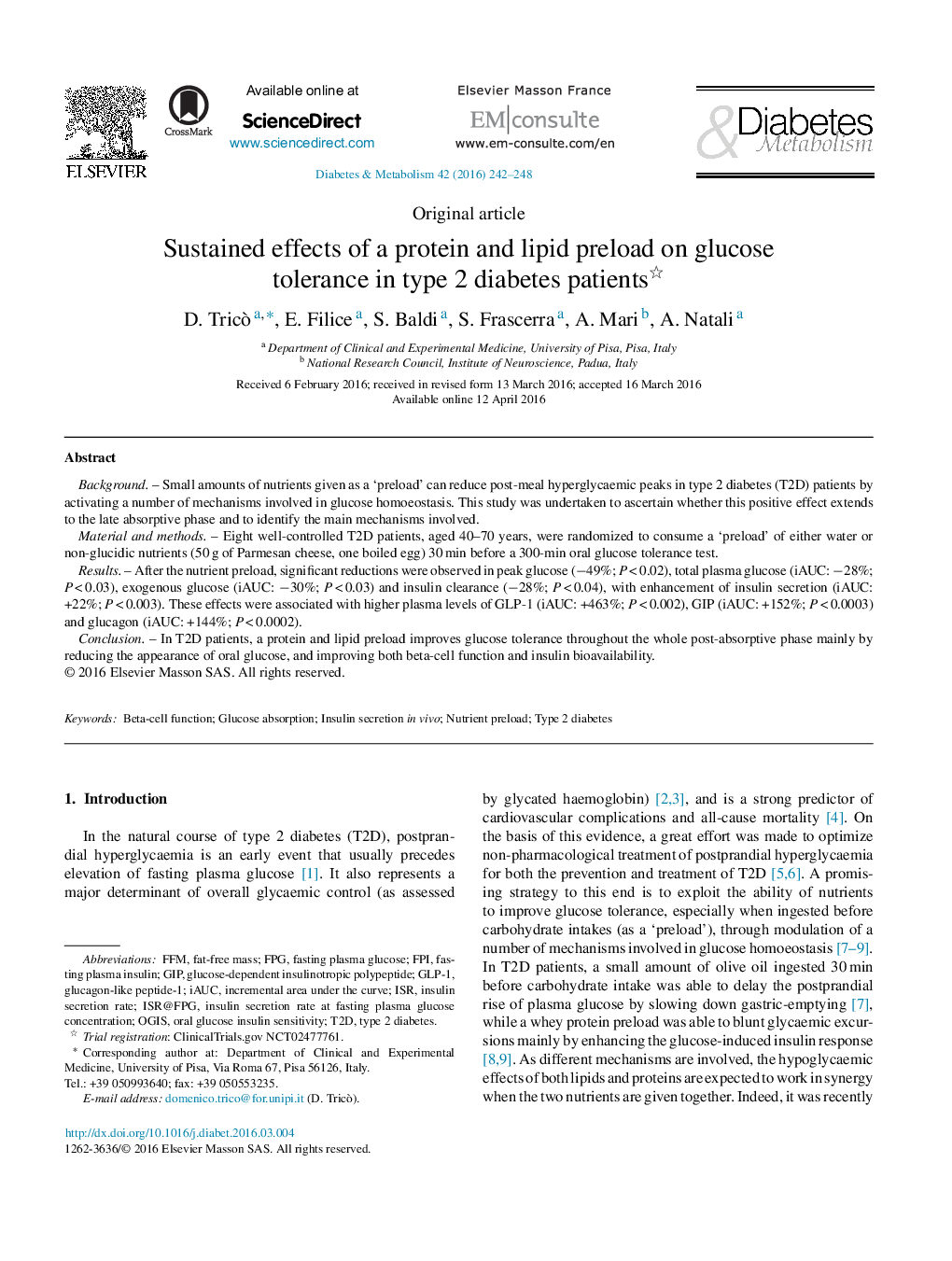| Article ID | Journal | Published Year | Pages | File Type |
|---|---|---|---|---|
| 3258959 | Diabetes & Metabolism | 2016 | 7 Pages |
BackgroundSmall amounts of nutrients given as a ‘preload’ can reduce post-meal hyperglycaemic peaks in type 2 diabetes (T2D) patients by activating a number of mechanisms involved in glucose homoeostasis. This study was undertaken to ascertain whether this positive effect extends to the late absorptive phase and to identify the main mechanisms involved.Material and methodsEight well-controlled T2D patients, aged 40–70 years, were randomized to consume a ‘preload’ of either water or non-glucidic nutrients (50 g of Parmesan cheese, one boiled egg) 30 min before a 300-min oral glucose tolerance test.ResultsAfter the nutrient preload, significant reductions were observed in peak glucose (−49%; P < 0.02), total plasma glucose (iAUC: −28%; P < 0.03), exogenous glucose (iAUC: −30%; P < 0.03) and insulin clearance (−28%; P < 0.04), with enhancement of insulin secretion (iAUC: +22%; P < 0.003). These effects were associated with higher plasma levels of GLP-1 (iAUC: +463%; P < 0.002), GIP (iAUC: +152%; P < 0.0003) and glucagon (iAUC: +144%; P < 0.0002).ConclusionIn T2D patients, a protein and lipid preload improves glucose tolerance throughout the whole post-absorptive phase mainly by reducing the appearance of oral glucose, and improving both beta-cell function and insulin bioavailability.
